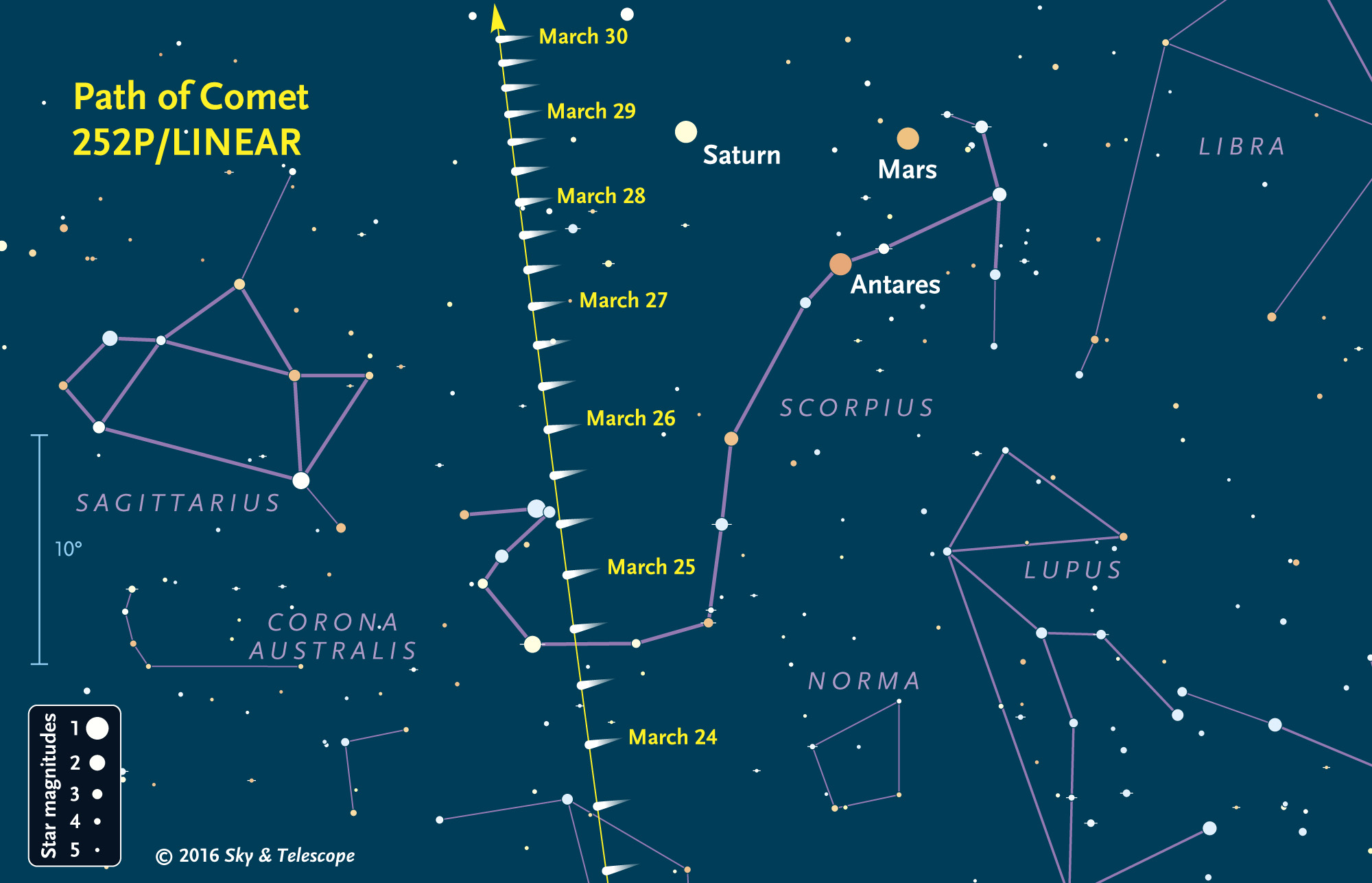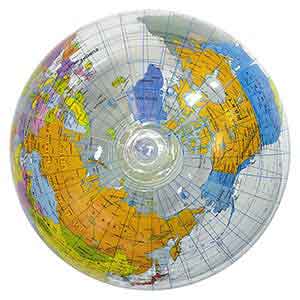This is a wonderful portrait of objects near and far.
The most nearby object is the comet, whose turquoise color is different from anything else in this cosmic panorama, and it is lovely to behold. The comet was only 5.3 million kilometers away when this picture was taken, which means its distance from the Earth was only about 1/28th of the distance between the Earth and the Sun.
The second most nearby object in the APOD is
Mars, which is seen in the upper left corner of the image to the upper left of
bright star Antares. It is fun that Mars and Antares should be so apparently close to one another, because the star Antares is actually named after planet Mars. "Mars" is the Roman name of the
Greek god of war Ares, and the name of the star is actually Ant-Ares: Rival of Mars. Both the planet and the star are so reddish in color.
According to my software, the distance between Mars and the Earth right now is about 0.848 AU, about 127 million kilometers, which means that Mars is closer to us than the Sun right now. It isn't always that way: sometimes Mars is on the far side of the Sun in its orbit around the center of the solar system.
And Antares? According to my software, its distance from the solar system is about 550 light years.
But we must return to the solar system. The third most nearby object in the APOD is
Saturn, currently at a distance of 9.66 AU, which is to say that Saturn is about 9.66 times farther away from the Earth than the Earth is from the Sun. The current distance to Saturn, according to my software, is 1,444,744,087 kilometers from the Earth.
No other solar system objects are visible in this APOD, so we must go to the nearest star of them all outside the solar system. That is
Proxima Centauri at 4.227 ± 0.014 light years, or about 39,900,000,000,000 kilometers away.
But I doubt that today's APOD is deep enough to resolve Proxima Centauri's faint 11th magnitude glow among the myriad of stars seen in the edge-on disk of the Milky Way. So we may look at the next best thing, white
Sun-like binary star Alpha Centauri, which has been nicely labeled in the annotated version of today's APOD. Alpha Centauri is 4.32 light-years away.
Instead of determining the distance to other individual stars, let's look at all the scattered blue stars that appear to "float" above the the disk of the Milky Way all the way from left to right in the upper part of the APOD. These stars belong to the
Sco-Cen association of OB stars, stars that belong to the hottest spectral classes O and B. Almost all the blue stars of the Sco-Cen association belong to spectral class B. At a distance of about 400 light-years, they are the closest association - widely spaced grouping - of hot stars as seen from the vantage point of the solar system.
But among all the blue stars of the Sco-Cen association, one white "star" is seen at about 1 o'clock, near the top of the image. That is
Omega Centauri, the largest and brightest of all the Milky Way's globular clusters. We are really far away now, because Omega Centauri is about 15,800 light-years away. That is considerably farther away than the most prominent nebulas seen in this APOD, the
Lagoon Nebula at far left at about 4,000 light-years and the
Carina Nebula at far right at nearly 8,000 light-years.
At far left is a large, bright, yellowish patch of almost innumerable stars. That is the Large Sagittarius Star Cloud, but it is really a part of the bulge of the Milky Way, seen as a peanut shape sticking out of the disk in this
infrared image of the Milky Way. And just above the bright yellow patch of the Large Sagittarius Star Cloud, deeply embedded in the dark dust lane, is
the center of the Milky Way. The center of the Milky Way, obviously invisible in the image, is 25,000 to 28,000 light-years away.
And that ends this journey from the near to the far in today's APOD. Thanks for the ride, Alex Cherney!

Ann
 Close Comet and the Milky Way
Close Comet and the Milky Way
